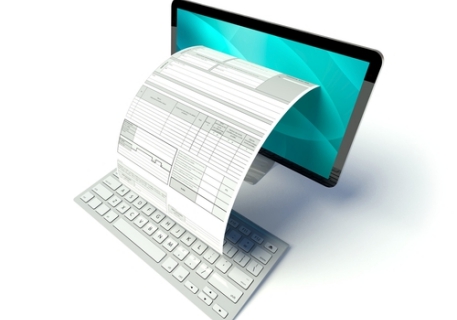Senior-Level Support Lacking For eBilling

The greater efficiencies afforded by email and other forms of electronic bill presentment are helping push more and more paper out of the billing process. However, senior-level managers often are impeding further process changes, and that trend is growing, new research has found. As such, billing automation is still not the norm.
Paper may dominate B2B invoicing, but email and other forms of electronic bill presentment are quickly replacing it. In fact, email is now the top channel used for B2B transactions, a new study has found.
In its 2014 Order-to-Cash (O2C) Automation Study, the Institute of Financial Operations notes that email and other forms of electronic presentment have grown significantly over the past five years – at paper’s expense. And the trend is continuing.
Indeed, the percentage of companies committed to begin e-invoicing within 12 months more than doubled to 5 percent from 2 percent in 2013, the study found. Moreover, about 10 percent of respondents plan to automate order processing within six months, and 5 percent plan to make the conversion within 12 months.
“Accounts receivable begins with the taking of an order and ends with the application of a payment,” Ken Brown, the institute’s interim executive director, said in a statement. “As a leading provider of benchmarking research in this field, we want to ensure that our annual survey aligns with the information needs of our members.”
For its report, the institute surveyed its membership in the first quarter of the year. organization has 9,000 members and customers, plus an additional 61,000 financial operations professionals.
Companies have significantly gravitated toward O2C technology, but automation still is not the norm, and for a variety of reasons. Approximately 50 percent of survey respondents cited factors such as a lack of senior leadership support for technology initiatives and internal unwillingness to pursue process changes.
Comparing last year’s survey data with what the institute found this year, lack of senior-level support for technology initiatives jumped to 20 percent from 6 percent. Moreover, lack of internal support for technology changes increased to 20 percent from 14 percent, and a lack of internal support for process changes increased to 10 percent from 6 percent.
The adoption of O2C automation has been a slow process, the institute noted, but the days of imaging systems that provided little more than improved archiving are over.
“We’re seeing an across-the-board increase in demand for integrated solutions designed to eliminate tedious manual data entry and archiving,” said Steve Smith, U.S. chief operating officer at Esker, which sponsored the study. “Organizations are turning to powerful cash-management and business-analytics tools that allow their current [accounts receivable] and order processing resources to function at a higher level, with greater accuracy.”
The institute’s reports mirrors information found in a similar study available from Research and Markets that predicted the global eInvoicing market will grow at a compound annual growth rate of 23.3 percent through 2018. However, while many enterprises understand the benefits of eInvoicing, risks and concerns over data sharing and data security are affecting adoption rates. Subsequently, many are turning to third-party vendors, which have begun to offer their solutions through cloud-based models, the report found.
The need to automate the invoicing process and reduce operational costs in organizations is one of the major drivers behind the anticipate growth in e-Invoicing, notes the report “Global E-Invoicing 2014-2018.” E-invoicing enables organizations to automate invoice generation and enhance the overall business process. It also reduces the total operational cost and time spent on the purchasing process.
“The emergence of cloud-based solutions has enabled organizations to increase their efficiency and reduce the cost of setting up valuable IT infrastructure,” an undisclosed analyst from the team that did the research said in the report summary. “The cloud-based model for eInvoicing offers a pay-per-use model, which provides cost-effective access to e-invoicing solutions to multiple users without any time and location constraints.
Moreover, the complexity involved in the electronic-purchasing process is one of the major challenges. It involves creating and maintaining product data electronically, and enabling suppliers to support electronic transactions increases this complexity, according to the report. Generally, there is a limitation in the ability of eInvoicing to address various types and ranges of purchasing activities, it notes.
